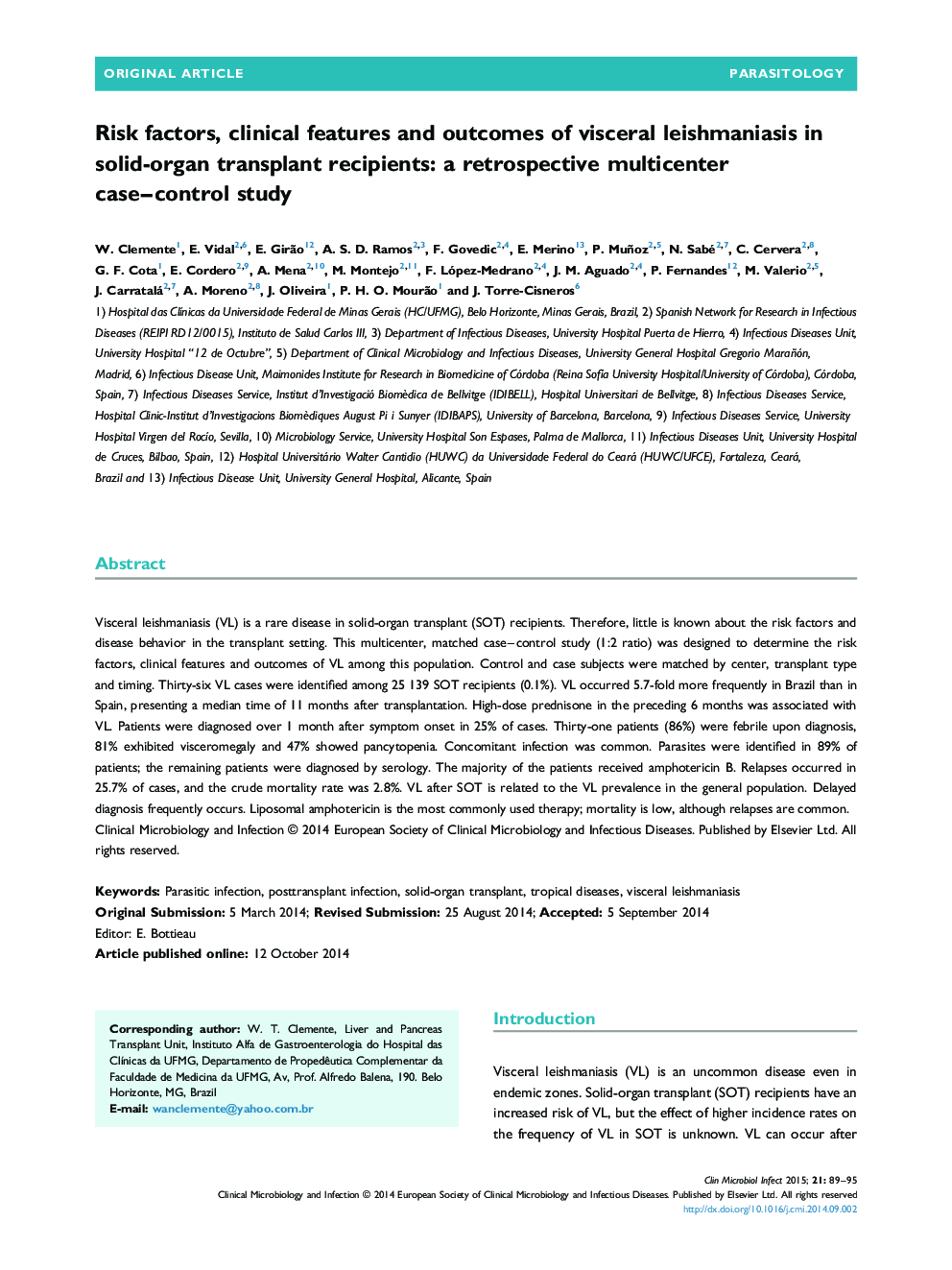| Article ID | Journal | Published Year | Pages | File Type |
|---|---|---|---|---|
| 3396452 | Clinical Microbiology and Infection | 2015 | 7 Pages |
Visceral leishmaniasis (VL) is a rare disease in solid-organ transplant (SOT) recipients. Therefore, little is known about the risk factors and disease behavior in the transplant setting. This multicenter, matched case–control study (1:2 ratio) was designed to determine the risk factors, clinical features and outcomes of VL among this population. Control and case subjects were matched by center, transplant type and timing. Thirty-six VL cases were identified among 25 139 SOT recipients (0.1%). VL occurred 5.7-fold more frequently in Brazil than in Spain, presenting a median time of 11 months after transplantation. High-dose prednisone in the preceding 6 months was associated with VL. Patients were diagnosed over 1 month after symptom onset in 25% of cases. Thirty-one patients (86%) were febrile upon diagnosis, 81% exhibited visceromegaly and 47% showed pancytopenia. Concomitant infection was common. Parasites were identified in 89% of patients; the remaining patients were diagnosed by serology. The majority of the patients received amphotericin B. Relapses occurred in 25.7% of cases, and the crude mortality rate was 2.8%. VL after SOT is related to the VL prevalence in the general population. Delayed diagnosis frequently occurs. Liposomal amphotericin is the most commonly used therapy; mortality is low, although relapses are common.
